Your Cart is Empty
Menu
-
- Shop by Type
- End of Line Sale Items
- New In
- Viking Gifts Under $30
- Hand Forged Axes
- Silver Viking Jewelry
- Stainless Steel Jewelry
- Cremation Jewelry
- Necklaces and Pendants
- Hand Carved Wooden Pendants
- Kings Chains
- Viking Drinking Horns
- Pendant Chains
- Rings
- Bracelets
- Earrings
- Beard Beads and Beard Rings
- Collectables
- Ceramic Mugs
- Street Wear
- Horn Jewelry
- Bronze and Pewter Jewelry
- Shop by Theme
- Viking Axe
- Celtic Jewelry
- Dragon or Serpent
- Viking Raven
- Wolf / Fenrir
- Rune Jewelry
- Odin Jewelry
- Ram / Goat
- Shieldmaidens / Lagertha
- Sword, Spear or Arrow
- Thor's Hammer / Mjolnir
- Tree of Life / Yggdrasil
- Helm of Awe / Aegishjalmur
- Triquetra or Triskelion
- Valknut / Knot of Slain
- Vegvisir / Viking Compass
- Veles / Bear
- Blogs
- Help
-
- Login

Viking Age Food and Cooking

Life for the Norse people was physically tough and plenty of calories were required to live and thrive, especially in the cold winters of Northern Scandinavia.
It's clear the Vikings ate well however and the fact that they had the energy not only to survive but to also travel the seas, raiding and growing their empire tells us a lot about just how well they ate.
The Norse people ate what they could produce on their farms or what they could hunt, gather or fish. Viking farms were usually small but would be sufficient to keep a family well fed throughout most of the year. Food was mainly seasonable apart from dried fish and grains which could last over the winter, so periods of feast or famine were inevitable.
A Viking family would typically eat two means a day. The dgmal or 'day meal' was eaten shortly after rising whilst the nattmal or 'night meal' was eaten in the evening at the end of the working day.
Meat was eaten at every meal and a staple of their diet was fish. The Vikings were skilled fishermen and would eat anything they could catch or scavenge. Herring would have been a common sight on the table and was often air-dried but there is also evidence that the Norse ate whale-meat from whales that had beached and died on shore.
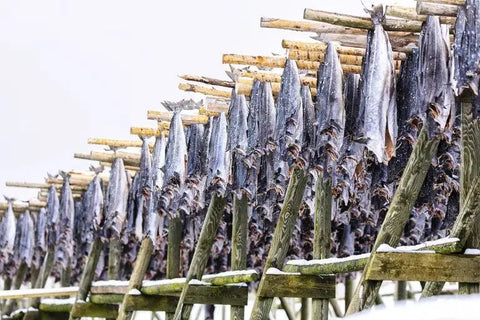
Meat and fish were both cooked over an open fire and either spit roasted or boiled in a soapstone pot or iron cauldron. Rich stews known as skause were a particular favorite amongst the Vikings, combining meat, root vegetables and greens with water and salt. This stew, often eaten in the evening having been cooking all day, was frequently kept going for several days, the ingredients constantly being replenished as it was eaten. Slow cooked food had the benefit of breaking down any tough and stringy meat and also ensuring that any germs were erradicated.
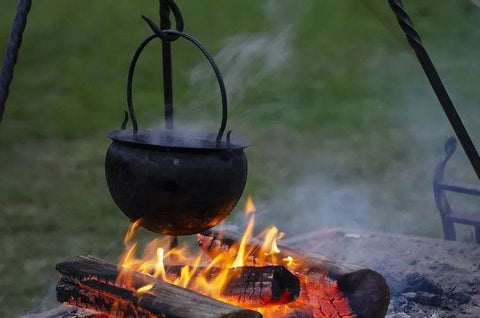
In addition to catching wild animals, Norse farmers also kept livestock such as sheep, goats, cattle, pigs and chickens. The pigs were eaten year-round and often reserved for feasting, but the other animals would be mainly used for milk and eggs during the summer months and then culled over the winter to provide meat (this also ensured that the animals didn't eat precious feed over the winter period).
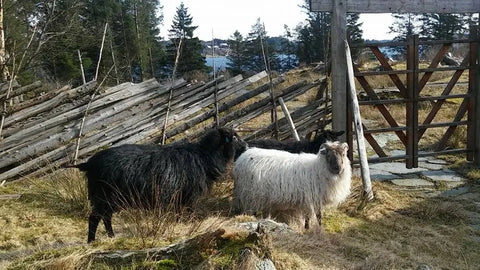
Milk from the sheep, goats and cattle was drunk fresh but because of its short shelf life was usually made into butter (the process of churning the butter would also leave buttermilk as a by-product which kept slightly longer that fresh milk but could still be drunk). Milk was also used to create soft cheeses or Skyr, a cream cheese similar to a liquid yoghurt and still widely drunk by Scandinavians today).
In old Nordic literature, fresh cheese is recommended for poor health, for healing wounds and for use against scurvy and kidney stones. There were also numerous laws underlining the importance of cheese and cheese production in the Viking period. According to a law from the end of the 12th century, people in Bohuslän were required to make cheese for the Church and the poor whilst cheese was also used as a means to pay taxes to the Danish crown.
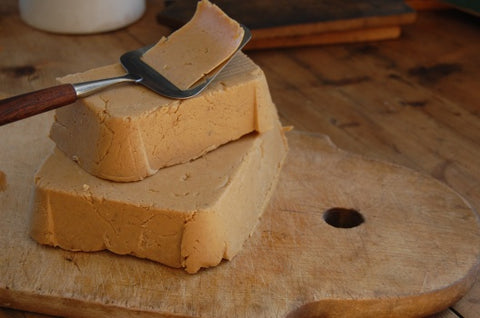
A substantial part of the Viking diet consisted of grain-based foods such as porridge and bread. Barley would have been the most commonly grown grain as it is easy to cultivate even in the cold latitudes of Scandinavia, but other crops such as oats, spelt and rye would also be harvested. The bread eaten by the Norse would not have been like the loaves we know today but instead bread would be made into flatbreads or small loaves with ground barley, water and salt and cooked on a griddle over the fire.
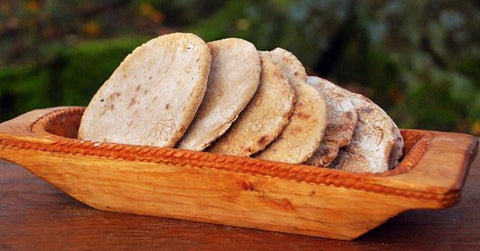
Here is a traditional Viking recipe for flat bread (makes about 3):
- 150 g barley flour
- 50 g other wholemeal flour such as rye or spelt
- 2 tsp crushed flax seeds
- 100-200 ml water
- 2 tsp butter
- a pinch of salt
- Work all the ingredients together into a dough. Add more flour or water if the dough becomes too wet or dry.
- Let dough sit for 1-2 hours.
- Shape dough into flat cakes about 1/2 to 1" thick.
- Bake at 50-60 degrees for about 15-20 min.
- Allow to cool
- Enjoy!
In addition to meat, dairy and grains, vegetables like carrots, onions, garlic, peas and beans were also grown and used in cooking. Root vegetables in particular were a good staple food because they could be easily stored or even left in the ground over winter without spoiling.
To add flavour to their food, salt (obtained by evaporating seawater) was often added along with herbs such as dill, parsley and thyme. Wealthier Vikings supplemented these with expensive imported herbs and spices such as pepper and cinnamon that arrived via traders from the East along the Silk Road.
For the summer and autumn months, apples, pears, berries and plums would all be foraged but were not typically cultivated and of course honey was widely used as a sweetener and to make mead.
